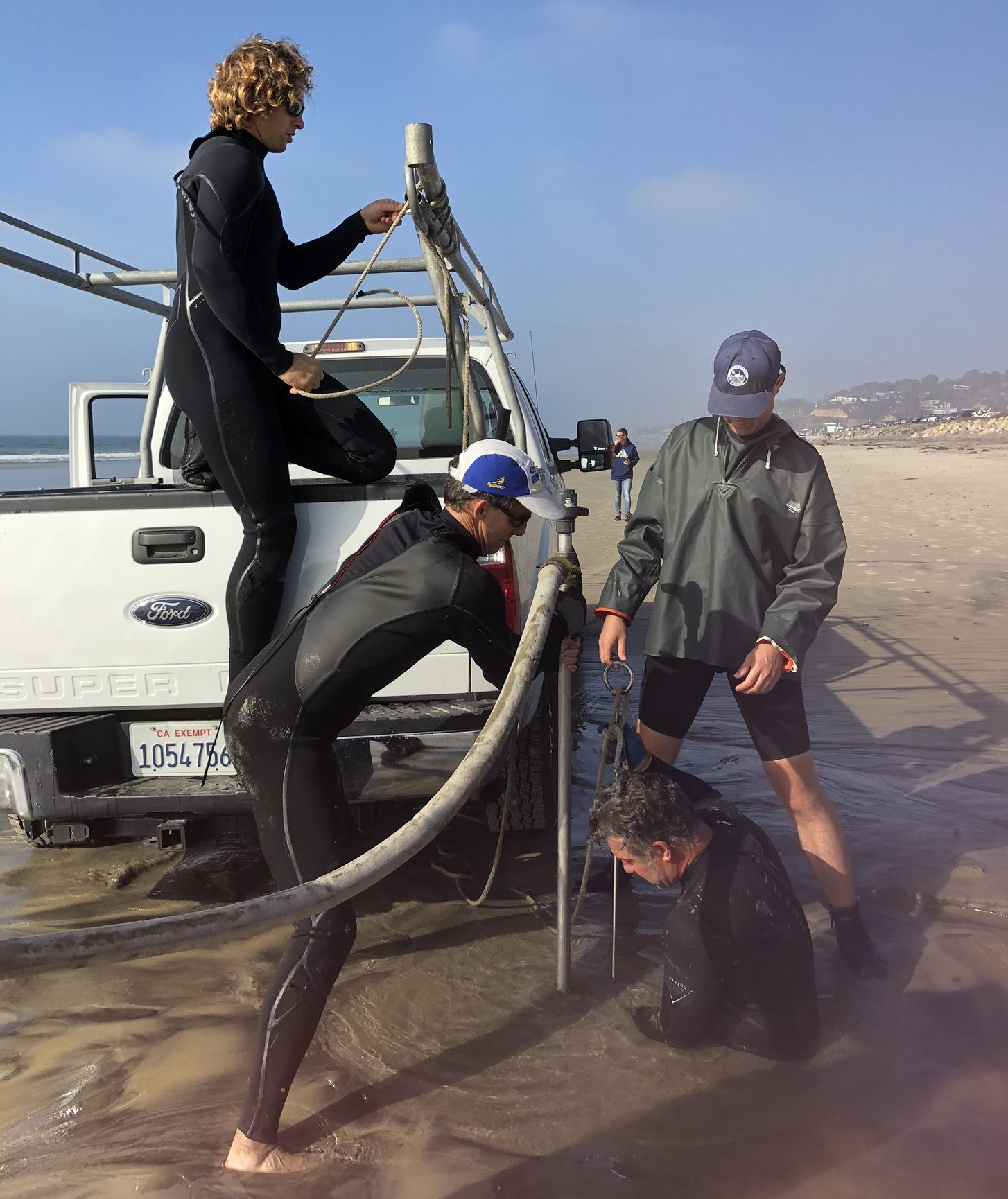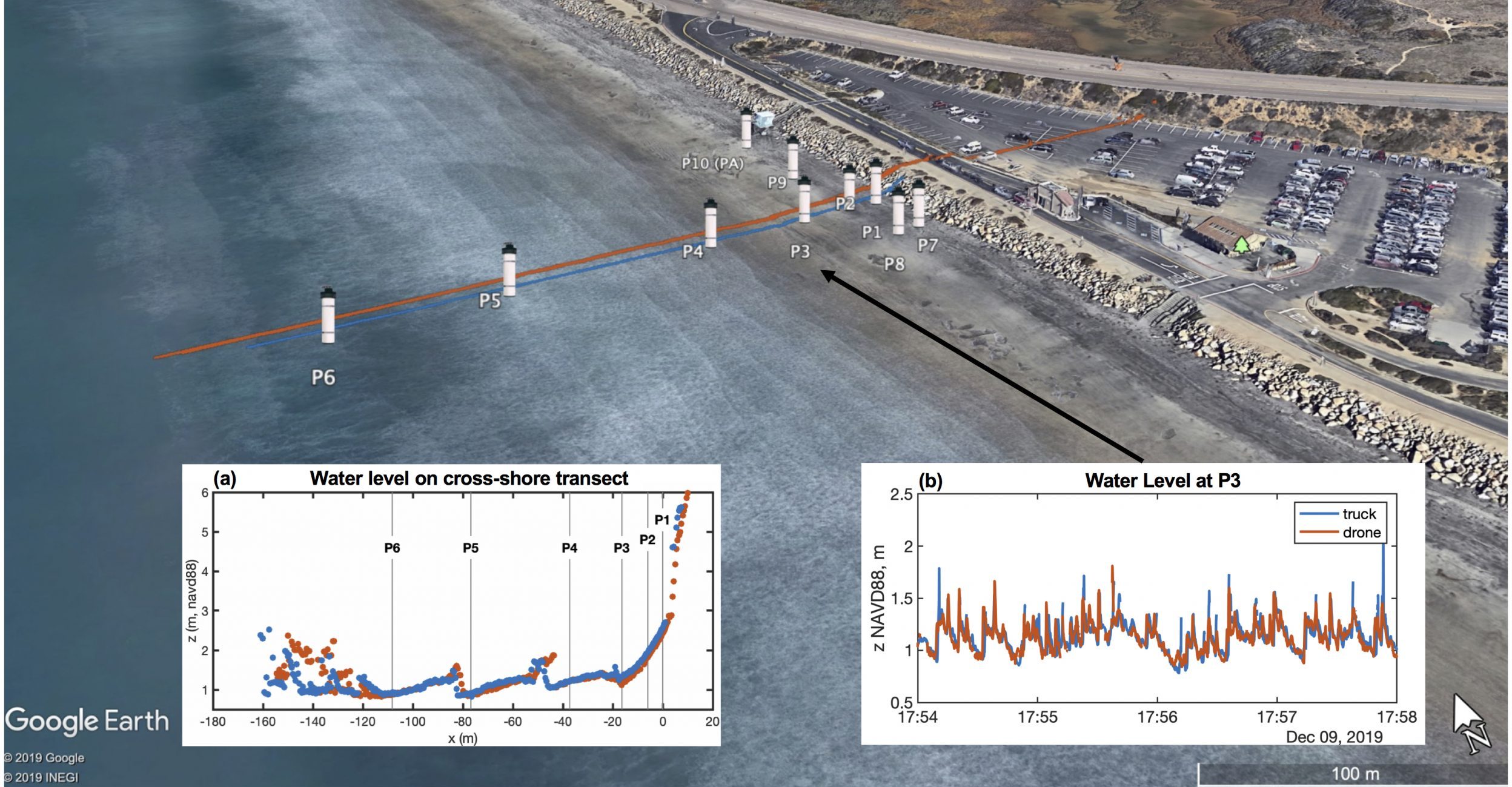Storm CoAstal Response Project
Beaches and cliffs can erode rapidly during storms, followed by recovery that can take from days to seasons. During the Storm CoAstal Response Project (SCaRP, winter 2019-2020), beach profiles and cobble exposure were observed as often as daily at Torrey Pines State Park, where existing monthly surveys span many years. The overarching objective was to observe the effects of individual storms that cumulatively define seasonal and longer-time scale changes. Research goals included:
- Beach Change:
- How do beach sand level and cobble coverage change during storms?
- Are cobble beaches more resistant to erosion than sandy beaches?
- How much and where do cobbles move during storms?
- What patterns do roaming cobbles form? Cusps; mega and ordinary!
- Wave runup:
- How do cobbles effect runup?
- What are the error sources in runup parameterizations and models (e.g. bathymetry, cobbles, offshore waves).
- Sediment transport:
- Does sand on the inner shelf move between Del Mar and Torrey Pines?
- Is inner shelf sediment transport related to surface and/or internal waves?
Surfzone waves and runup were observed for several months at Torrey Pines State Beach and Del Mar Beach with cross- and along-shore arrays of buried pressure sensors (Figure 1). During intensive phases of SCaRP, wave runup was observed with a LiDAR on a stationary truck overlooking the beach, and with a LiDAR-drone hovering above the beach. Surveys with the LiDAR truck every low tide during storms mapped cobble locations and beach and cliff elevations.


